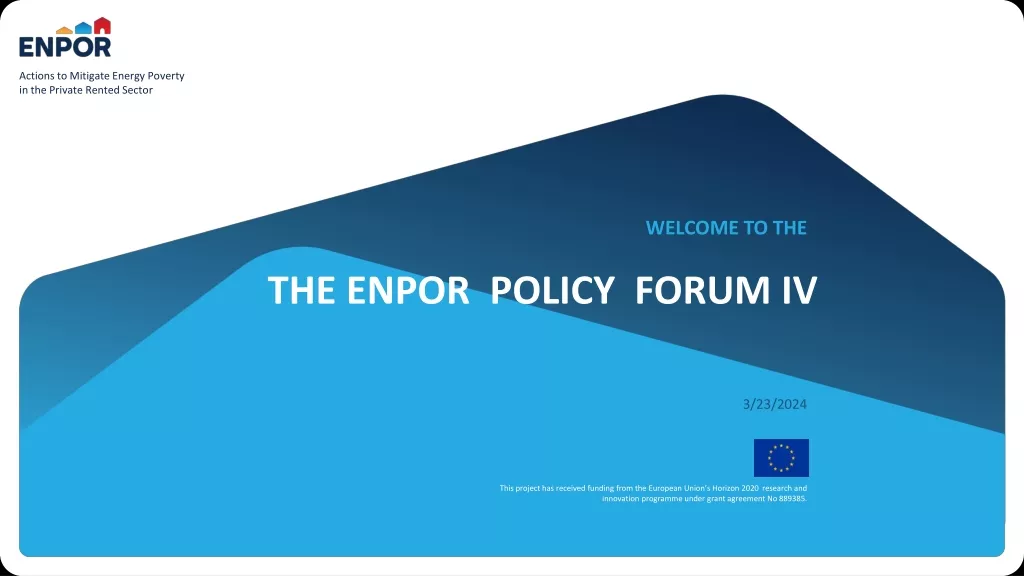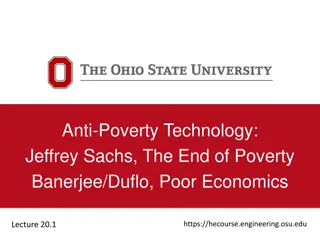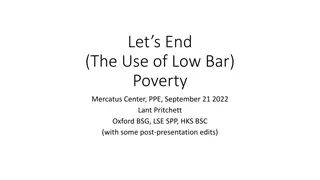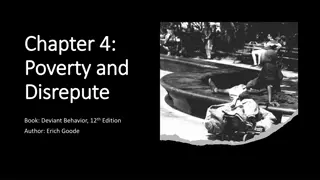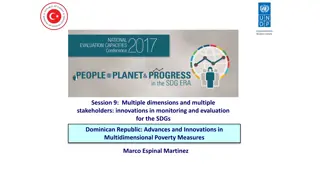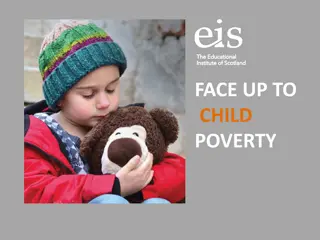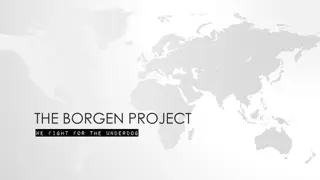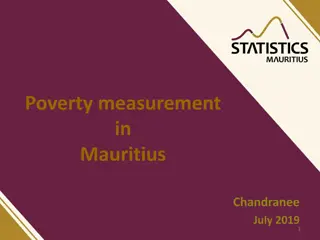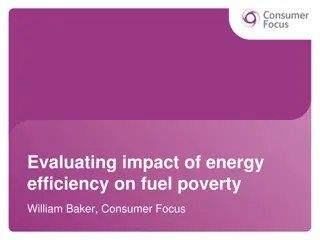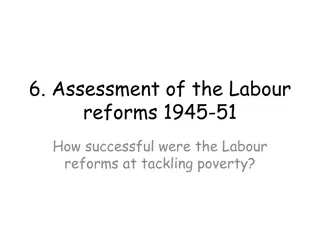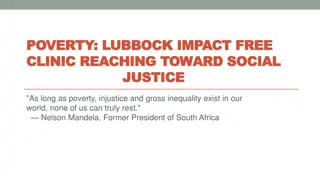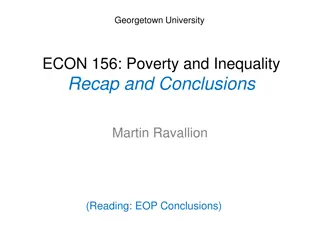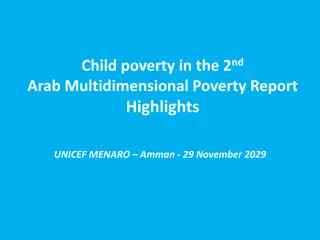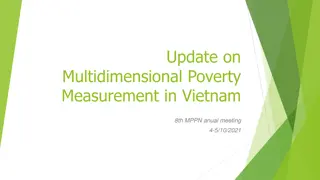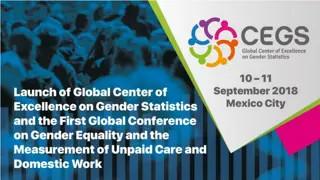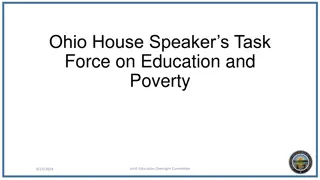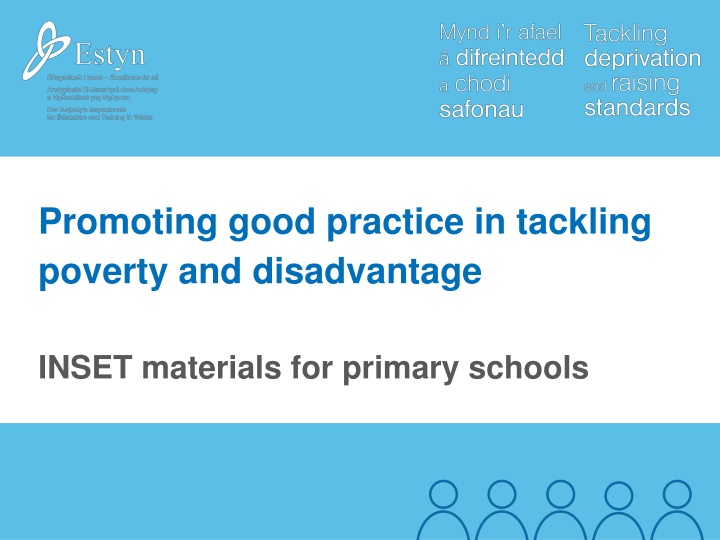
Addressing Poverty and Disadvantage in Primary Schools
Explore insights on disadvantaged pupils, defining criteria, and the impact of poverty on education. Gain strategies to raise achievement among disadvantaged students through structured approaches and school priorities.
Download Presentation

Please find below an Image/Link to download the presentation.
The content on the website is provided AS IS for your information and personal use only. It may not be sold, licensed, or shared on other websites without obtaining consent from the author. If you encounter any issues during the download, it is possible that the publisher has removed the file from their server.
You are allowed to download the files provided on this website for personal or commercial use, subject to the condition that they are used lawfully. All files are the property of their respective owners.
The content on the website is provided AS IS for your information and personal use only. It may not be sold, licensed, or shared on other websites without obtaining consent from the author.
E N D
Presentation Transcript
Promoting good practice in tackling poverty and disadvantage INSET materials for primary schools
Part 1: What do we know about disadvantaged pupils?
Slide 1: Overall aims of the training: The overall aims of the training are to promote best practice in tackling poverty and disadvantage as well as support schools in developing a whole-school structured, coherent and focused approach to raising the achievement of disadvantaged pupils. Objectives for participants: By the end of this session, participants will have: considered the characteristics and impact of poverty and disadvantage on pupils; and reflected on how pupils in the school are affected by disadvantage. Outcomes for participants: By the end of this session, participants should: understand how poverty and disadvantage impact on their pupils achievements and progress; and know the school priorities for tackling disadvantage identified in the school improvement plan.
Slide 2: How should we define disadvantaged pupils? It is important to have a broad range of criteria for identifying disadvantaged pupils. Disadvantaged pupils include: those eligible for free school meals; those from minority groups; those in families on low income; looked-after children; and traveller children.
Slide 3: The schools percentage of statutory school age pupils entitled to FSM three year average You should insert chart 1.2b from the school s All Wales core data set. The following chart shows an example of this table.
Slide 4: Studies on child poverty tell us that: the gap between pupils from richer and poorer backgrounds widens especially quickly during primary school; disadvantaged pupils in primary schools are more likely to lack ambition and self esteem, and to have behavioural problems and difficulty relating to their peers; boys as young as nine in disadvantaged schools become disenchanted with school and start to disengage; and pupils in disadvantaged schools have limited access to music, art and out of school activities that pupils in advantaged schools generally take for granted.
Slide 5: We also know that pupils from disadvantaged backgrounds: are more likely to have a poor attendance record; often perceive the curriculum as irrelevant; are less likely to accept the school culture; are more likely to have additional learning needs; have parents who are less likely to be involved in their children s education; have parents who are more likely to have a negative perception and experience of school and education; and are less healthy.
Slide 6: Research shows that: the gap between the achievement of disadvantaged children compared to advantaged children is present at months old and significant by the age of years. When disadvantaged children enter school, they are often a behind their more privileged classmates. Research also tells us that disadvantaged pupils are more likely to do well if the young person: has a belief in ; finds school ; is supported by ; and does not experience .
Slide 6 (completed): Research shows that: the gap between the achievement of disadvantaged children compared to advantaged children is present at months old and significant by the age of years. When disadvantaged children enter school, they are often a behind their more privileged classmates. Research also tells us that disadvantaged pupils are more likely to do well if the young person: has a belief in his/her own ability at school; is supported by the engagement of his/her parents in their education; finds school worthwhile; and does not experience bullying.
Slide 7: The schools current priorities for tackling disadvantage include: (You should complete this slide with information taken from the school improvement plan.)
Part 2: How well do disadvantaged pupils achieve?
Revision of Part 1 How have we defined disadvantaged pupils? It is important to have a broad range of criteria for identifying disadvantaged pupils. Disadvantaged pupils include: those entitled to free school meals; those from minority groups; those in families on low income; looked-after children; and traveller children.
Revision of Part 1 What do we know about the effects of poverty and disadvantage? Disadvantaged pupils are more likely to lack ambition and self-esteem, and to have behavioural problems and difficulty relating to their peers. Disadvantaged pupils are more likely to see the curriculum as irrelevant. Pupils in disadvantaged schools have limited access to music, art and out- of-school activities that pupils in advantaged schools generally take for granted. Pupils from disadvantaged backgrounds are more likely to have a poor attendance record and are often less likely to accept the school culture. Pupils from disadvantaged backgrounds are more likely to have parents who are less involved in their children s education and have a negative perception and experience of school and education.
Slide 1: Objectives for participants: By the end of this session, participants will have: explored a range of national and local data on the performance of disadvantaged pupils; and considered the performance of disadvantaged pupils in the school in the Foundation Phase and key stage 2. Outcomes for participants: By the end of this session, participants should: know about the performance of disadvantaged pupils in Wales; and understand how well disadvantaged pupils are achieving in the school.
Slide 2: Key results for disadvantaged pupils in Wales Overall, the performance of both FSM and non-FSM pupils has improved since 2005. However, the performance of pupils entitled to FSM is lower than their non-entitled counterparts at all key stages and in all performance measures. The gap in performance increases as pupils get older. In the Foundation Phase, in 2013, the area of learning with the widest gap in performance between FSM and non-FSM pupils was Language, literacy and communication skills (English) with 16.5 percentage points. The area of learning with the narrowest gap was Personal and social development, wellbeing and cultural diversity with 8.6 percentage points. In key stage 2, in 2013, for individual subjects the gap is widest in Welsh (20.3 percentage points) and narrowest in science (14.4 percentage points); Looking at the core subject indicator, the gap in performance has generally narrowed over the last six years at key stage 2 but is still wider than in the Foundation Phase.
Slide 3: Foundation Phase school performance data (Insert data from Section 1.2a/1.2b (FSM/non-FSM trend) from the All Wales core data sets for the Foundation Phase.) The following table shows an example.
Slide 4: Foundation Phase school performance data (Insert data from Section 1.2a/1.2b (FSM/non-FSM family comparison) from the All Wales core data sets for the Foundation Phase.) The following table shows an example.
Slide 5: Key stage 2 school performance data (Insert data from Section 1.2a/1.2b (FSM/non-FSM trend) from the All Wales core data sets for key stage 2.)
Slide 6: Key stage 2 school performance data (Insert data from Section 1.2a/1.2b (FSM/non-FSM family comparison) from the All Wales core data sets for key stage 2.)
Part 3: What do effective schools in challenging circumstances do well?
Revision of Parts 1 and 2 How have we defined disadvantaged pupils? It is important to have a broad range of criteria for identifying disadvantaged pupils. Disadvantaged pupils include: those entitled to free school meals; those from minority groups; those in families on low income; looked-after children; and traveller children.
Revision of Parts 1 and 2 What do we know about the effects of poverty and disadvantage? Disadvantaged pupils are more likely to lack ambition and self-esteem, and to have behavioural problems and difficulty relating to their peers. Disadvantaged pupils are more likely to see the curriculum as irrelevant. Pupils in disadvantaged schools have limited access to music, art and out- of-school activities that pupils in advantaged schools generally take for granted. Pupils from disadvantaged backgrounds are more likely to have a poor attendance record and are often less likely to accept the school culture. Pupils from disadvantaged backgrounds are more likely to have parents who are less involved in their children s education and have a negative perception and experience of school and education.
Slide 1: Objectives for participants: By the end of this session, participants will have: reflected on good practice in the provision for disadvantaged pupils; and evaluated aspects of the school s provision for disadvantaged pupils. Outcomes for participants: By the end of this session, participants should have identified: strengths in the school s provision for disadvantaged pupils; and areas for improvement in order to raise the standards of disadvantaged pupils achievements.
Slide 2: Strategies that can be implemented by the school alone Ten in-school strategies: Whole-school approach Using data to identify and track progress Literacy and learning skills Social and emotional skills Attendance, punctuality and behaviour Tailoring the curriculum Enriching experiences Listening to learners Engaging parents Developing staff expertise
Slide 3: Strategies that involve working with partners Schools alone cannot break the link between disadvantage and achievement. Ten multi-agency strategies: Community leadership Ten in-school strategies: Parenting programmes Nurture groups Whole-school approach Using data to identify and track progress Literacy and learning skills Social and emotional skills Attendance, punctuality and behaviour Tailoring the curriculum Enriching experiences Listening to learners Engaging parents Developing staff expertise Team around the family support for vulnerable pupils On-site services Community participation Family learning Out of school hours learning Pooling resources and use of Pupil Deprivation Grant Evaluation
Slide 4: What do effective schools in challenging circumstances do well? 1 Identifying, tracking and monitoring disadvantaged pupils progress 2 Tailoring the curriculum to the needs of disadvantaged pupils 3 Engaging with parents and the community 4 Partnership working 5 Leadership and management in tackling disadvantage
Part 4: How can we tackle poverty and disadvantage more effectively? Action planning for improvement
Slide 1: Objectives for participants: By the end of this session, participants will have: reflected on their own and the school s provision for disadvantaged pupils; and considered research evidence on improving learning and attainment. Outcomes for participants: By the end of this session, participants will have: identified at least one change to their practice to benefit disadvantaged pupils; and proposed actions for department and school improvement plans.

